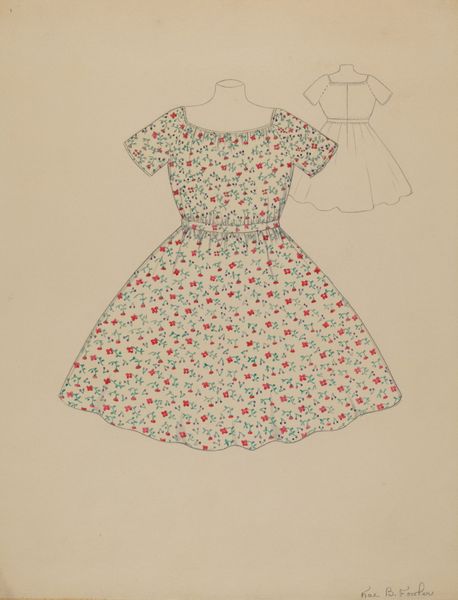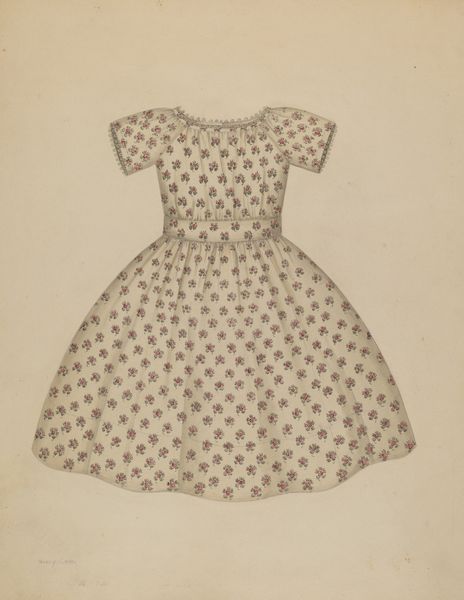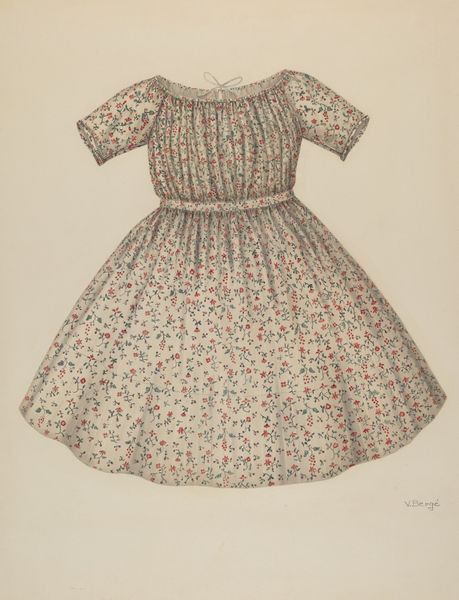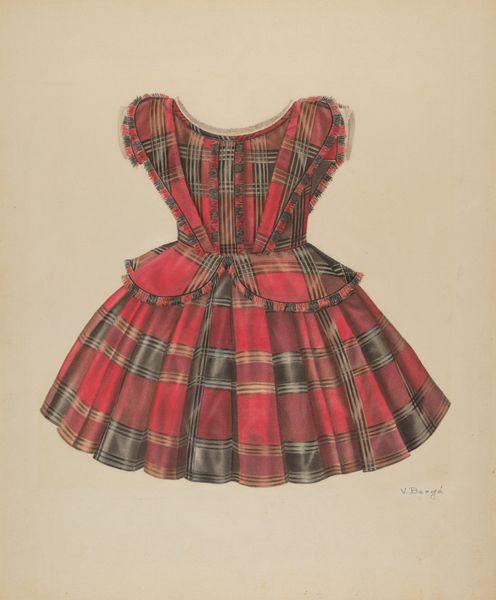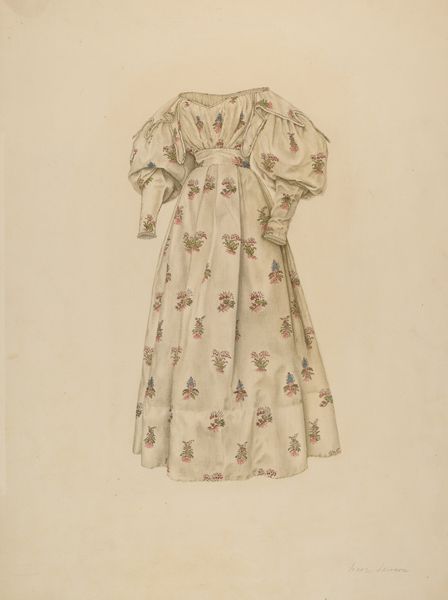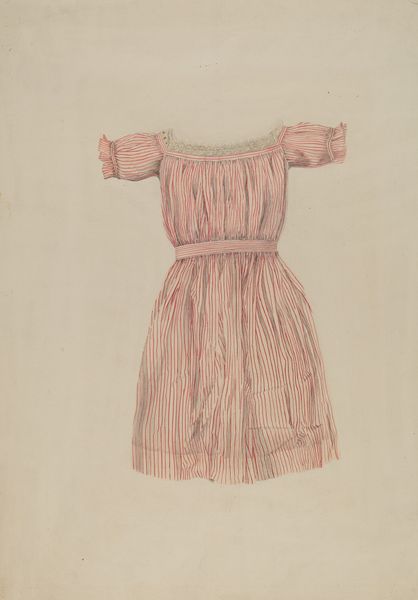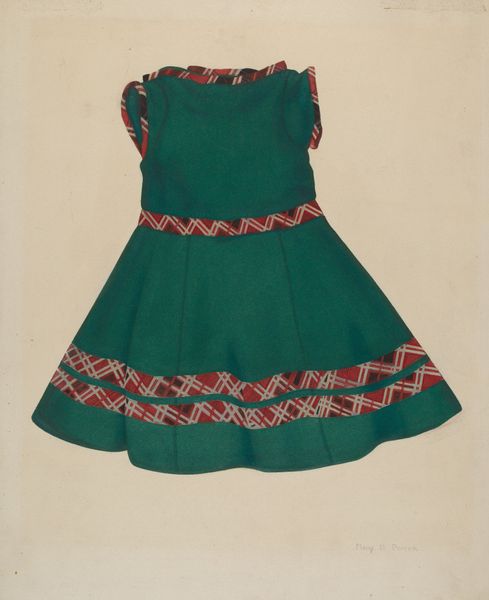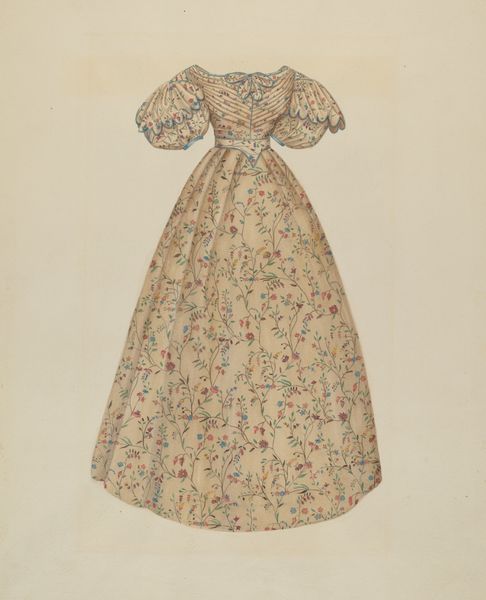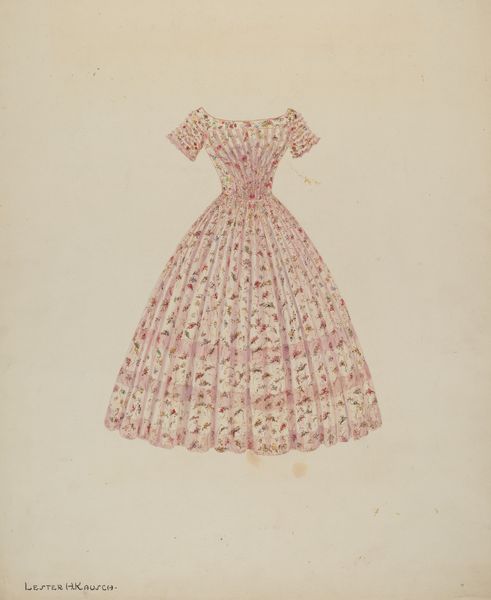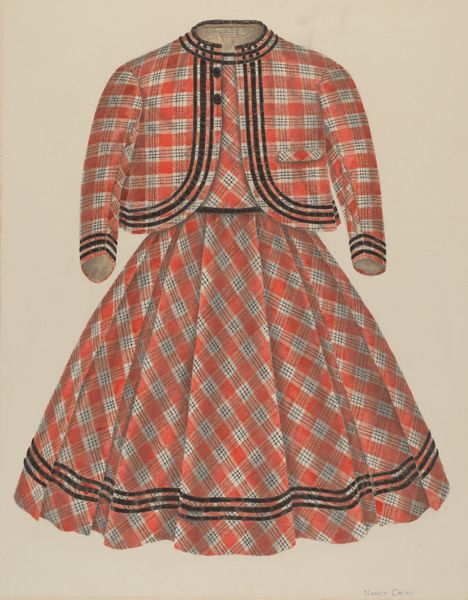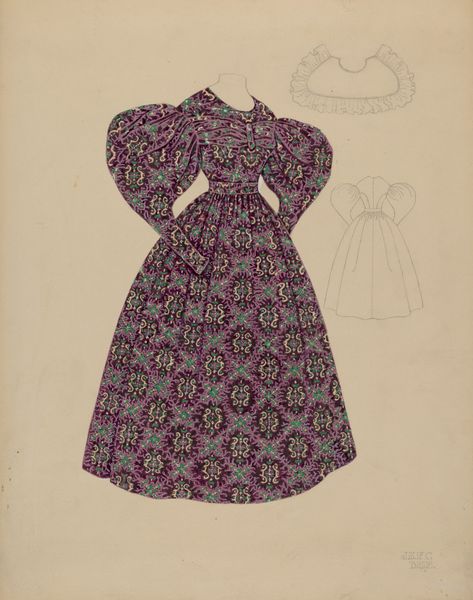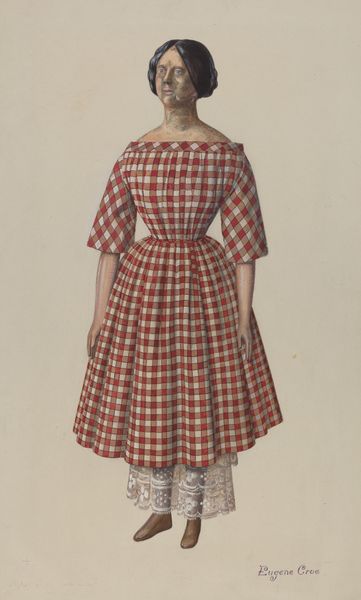
drawing, painting, paper, watercolor
#
portrait
#
drawing
#
water colours
#
painting
#
paper
#
watercolor
#
watercolour illustration
Dimensions: overall: 29.2 x 22.8 cm (11 1/2 x 9 in.)
Copyright: National Gallery of Art: CC0 1.0
Curator: Looking at this vibrant watercolour on paper, "Child's Dress" by Catherine Fowler, created around 1936, what are your first impressions? Editor: It’s…bittersweet. There's a simple beauty here, but seeing it flat, uninhabited, evokes a longing, doesn't it? The vacant dress hinting at stories untold, moments unseen, joys missed? Curator: Yes, the absence is quite potent. Focusing on form, we see how the dress is rendered. The artist skillfully utilizes repetitive geometric patterns, tiny squares containing even tinier crosses and dots, almost like miniature constellations against the primary red field. How does the materiality enhance the composition, in your view? Editor: The translucence of watercolor gives it a ghost-like presence; as if remembering becomes the dress itself, clinging to form. You sense the fabric's potential life– to swirl, gather, even wrinkle—through the crispness. This creates interesting tension, no? Curator: Indeed. The careful articulation also alludes to precision, design perhaps suggesting an aspirational vision linked to femininity. It's carefully structured with short, puffed sleeves, high-waist and flared skirt terminating with tiny scalloped edges at the hem, Editor: Its small imperfections whisper secrets; like how imagination allows us access points, gaps within what exists tangibly– the essence beyond representation; Curator: The geometric rigidity hints at more than just function. Might it act also as structure symbolic towards its intended recipient as sartorial uniform and symbol for its intended context, perhaps as statement to aspirations for social place during times, that would soon see such certainties thrown asunder Editor: In essence this "Child's Dress” manages speaks volumes regarding absence itself: hinting all which remains unspoken yet simultaneously resonates as profoundly real: childhood suspended, potential unrealised Curator: A concise assessment, blending visual interpretation to philosophical reflections— I must concede it opens different entry towards understanding formal elements entwined into deeply resonating piece indeed, wouldn't agree further
Comments
No comments
Be the first to comment and join the conversation on the ultimate creative platform.

